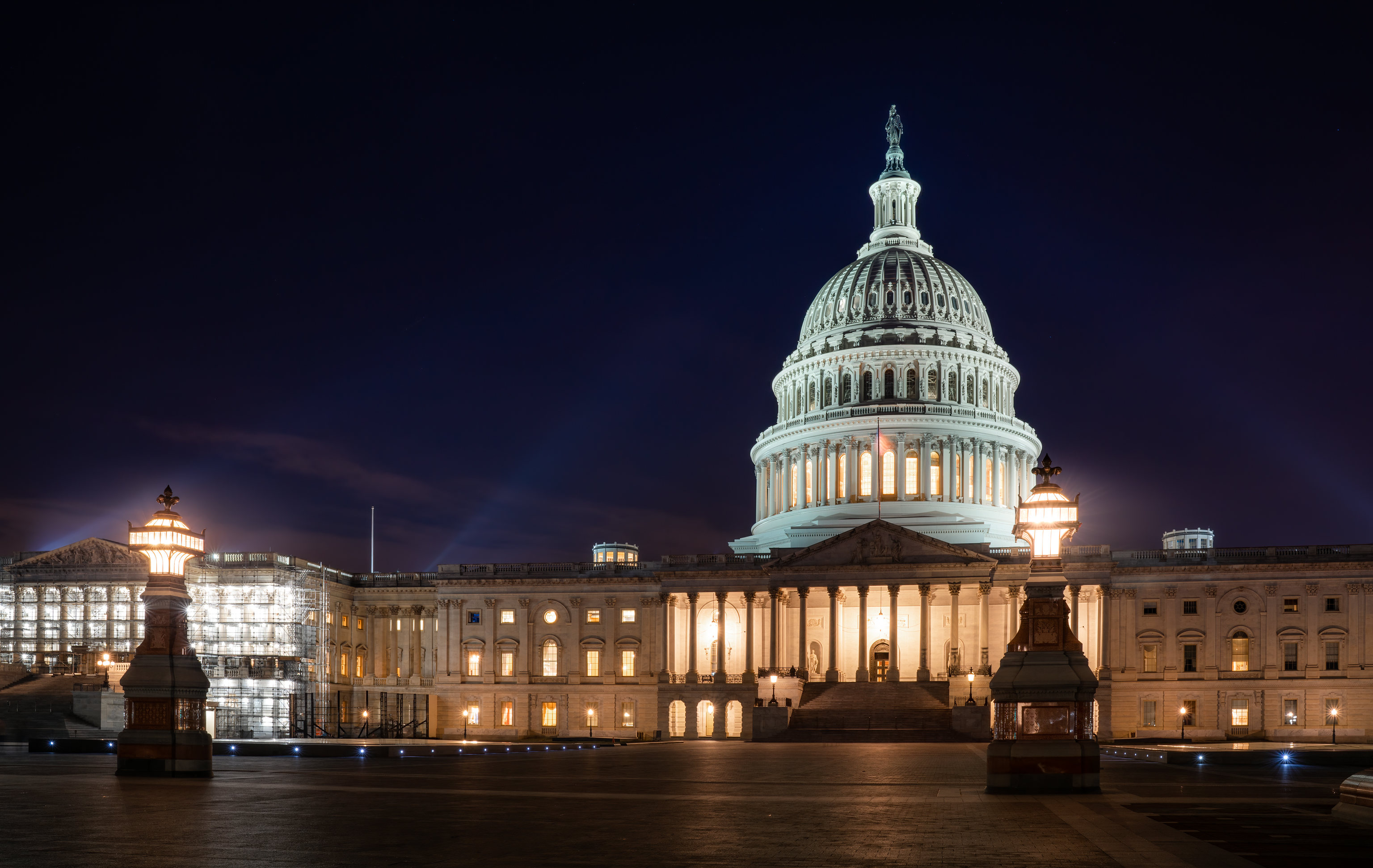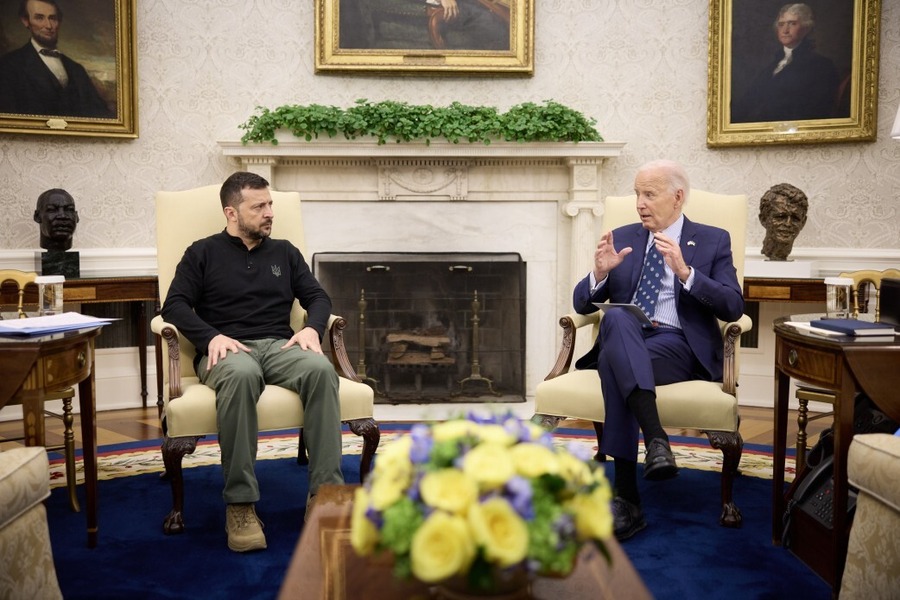Transparency of International Agreements Under the Revised Case-Zablocki Act
An assessment after six months

Published by The Lawfare Institute
in Cooperation With

Editor's Note: This post also appears on Just Security.
In December 2022, Congress enacted sweeping transparency reforms for executive agreements, which took effect in September 2023. In this post, we assess how well this new transparency system is working based on publicly available information. As we will explain, the law has led to substantially more transparency for these agreements, as Congress had intended. In at least one respect, however, the executive branch’s compliance raises questions for Congress to consider, and there are other aspects of the new transparency regime that could be improved. As Congress knew when it enacted the law, more work remains to be done.
Case-Zablocki Act
Since World War II, the vast majority of international agreements concluded by the United States have been done as “executive agreements” rather than as Senate-approved treaties. Many of these executive agreements are authorized or approved by statutes (“congressional-executive agreements”), but others are concluded based on authority conferred by treaties (“treaty-based executive agreements”) or on the President’s independent constitutional authority (“sole executive agreements”).
The Case-Zablocki Act, first enacted in 1972, requires that the State Department report these various executive agreements to Congress. Until recently, the Act required reporting within 60 days after the agreements took effect. Another related statute has long required publication of the agreements on a State Department website within 180 days after they took effect.
The State Department’s reporting of agreements has often been late or incomplete, and Congress has amended the Case-Zablocki Act on a number of occasions in an effort to improve compliance, without much success. Over time, State Department regulations also exempted many categories of agreements from publication, such that the public was often not given information about what was being reported to Congress. Moreover, although in its reports to Congress the State Department included a brief background statement containing a citation of its legal authority for concluding the agreements, these background statements were not made public.
In addition to these limitations on transparency, neither the Case-Zablocki Act nor the publication statute covered non-binding agreements concluded by the executive branch, even though these agreements have grown over time and often resemble binding executive agreements in form and substance. We discussed some of these deficiencies in transparency in a law review article we published in 2020. More recently, we published another article discussing the increasing use of non-binding agreements by the executive branch, including by various administrative agencies.
Recent Amendments
In December 2022, Congress amended the Case-Zablocki Act to impose significant new transparency mandates for both executive agreements and some non-binding agreements. The revised Act now requires the State Department to transmit executive agreements to Congress on a monthly basis. In addition, the Department is required to transmit to Congress “qualifying non-binding instruments,” which are defined as non-binding instruments that “could reasonably be expected to have a significant impact on the foreign policy of the United States” or that are subject to a written communication from the chair or ranking member of the congressional foreign affairs committee.
For both the executive agreements and the qualifying non-binding instruments, the executive branch is supposed to include a “detailed description” of the legal authority that provides support for the agreement or instrument. When the legal support is Article II of the Constitution, moreover, the executive branch must explain its basis for relying on it. The revisions to the Act also require publication of most of what must be reported to Congress, including the descriptions of legal authority. These changes took effect in September 2023, and the State Department enacted regulations implementing them the following month. The regulations include, among other things, a list of factors that the executive branch must consider in determining whether a non-binding instrument is one that could reasonably be expected to have a significant impact on the foreign policy of the United States.
Transparency Reforms Prompted by the Statute
After six months of reporting and publication, we can begin to assess the executive branch’s compliance with the new statute. There have been substantial and important improvements, and a few disappointments.
Government Organization
The government appears to have organized itself to better serve the transparency and accountability aims of the new law. The State Department issued updated regulations in light of the statute and has been engaging with the dozens of agencies that conclude binding and non-binding agreements to ensure that they are aware of the new requirements. The Secretary of State has appointed a Chief International Agreements Officer, as required by the revised law. The Department of Defense has also appointed a Chief International Agreements Officer of its own, as required. Other agencies are likewise making progress on this requirement This is an important structural improvement, ensuring that there is someone accountable for compliance with the new law, as well as preexisting reporting obligations.
Publication of Binding Executive Agreements
The State Department has improved the public transparency of executive agreements. Starting in October 2023, it began publishing on a website the information that it was reporting monthly to Congress about executive agreements. (The actual text of the agreements unfortunately appears on a different website.) Between October 2023 and March 2024, the Department reported 36 executive agreements as well as the legal authority for the agreements in terms of citations without further explanation.
This website a major improvement in international agreement accountability. The government in the past published only about half of its binding executive agreements. Public access to the other half depended on enterprising private sources that were available only by paid subscription. At least as important, the legal authority for each agreement is now published, as the new law requires. This legal authority, which is usually but not always statutes, was previously conveyed to Congress but not made public. As directed by the new law, the citations are also more specific than they were in the past, indicating the specific section of a statute that the executive branch is relying on.
These changes are important for several reasons. They allow the public to know what executive agreements the government is making in its name. And they allow significantly broader scrutiny of the legality of binding executive agreements. Our previous work provided empirical and conceptual reasons to think that many executive agreements lacked a solid legal basis but noted that it was hard—due to resource constraints and imprecise legal citations—for the relevant congressional committees to scrutinize the legality of the agreements. The somewhat more elaborate citations, and especially their availability to the public, should in theory permit scholars and other experts to assess and criticize executive branch legality claims and bring doubtful ones to the attention of Congress. It also presumably requires the executive branch to focus at least a bit more thoroughly on the legal basis for such agreements—something that our prior work suggested it was not always doing.
One could argue that even the slightly more elaborate and now public explanation of the legal authority for agreements does not meet the new statutory requirement for a “detailed description” of such authority. A citation by itself might not amount to a description, let alone a detailed one. A separate issue is that when the Department cites to Article II of the Constitution, its explanations for why it is doing so have been cryptic—for example, just a reference to the “conduct of foreign relations,” even though there is no such general power listed in Article II, or to the provision in Article II directing that the President is to take care that the laws are faithfully executed.
There are ways that Congress could require further specification of legal authority, as we explained in our 2020 article, The Failed Transparency Regime for Executive Agreements: An Empirical and Normative Analysis. But for now the question is best left to negotiation over time between congressional staffers and the State Department. This is a new statutory regime, and the executive branch has made a number of important changes in its practice to comply with it. Congress was not specific about what it wanted the legal citations to look like, and it might be burdensome to require the State Department to give lengthy explanations for the legality of each agreement. Providing the specific statutes that the executive branch is relying on, and making them public, is at least a very good first step.
Publication of Non-Binding Agreements
The Department has another website that contains the texts of the qualifying non-binding instruments that it reports to Congress. Between October 2023 and March 2024, the Department reported 32 such instruments from several executive branch agencies. This is a major improvement since non-binding agreements in the past were generally available to Congress and the public only if an agency decided to publish them voluntarily. Few chose to do so, meaning that Congress and the American public were left in the dark even about important non-binding agreements. This new system for publicizing binding and non-binding agreements is a revolution viewed from this perspective.
It is noteworthy that, even though the Department is obligated to report only “qualifying non-binding instruments”—those deemed “significant” or subject to a communication by the Chair or Ranking Member of the House Foreign Affairs Committee or Senate Foreign Relations Committee—it is reporting nearly as many such instruments as executive agreements (which are not subject to a significance threshold). There are, therefore, likely many more non-binding agreements concluded than is reflected in the number of reported agreements. This fact supports a critical empirical finding from our article, The Rise of Nonbinding International Agreements: non-binding instruments increasingly have become a central part of U.S. diplomatic relations.
But State Department practice on another aspect of its statutory duties concerning non-binding agreements is disappointing. The revised Case-Zablocki Act and the State Department’s regulations require a “detailed description” of legal authority for these instruments, just as for binding executive agreements. The Department has decided to comply with this obligation with a blanket assertion of authority that it includes in each monthly report to Congress and on the public website. That blanket statement provides, in full:
Unless otherwise indicated, the following statement of legal authority in accordance with 1 USC 112b(a)(1)(A)(iii) applies to all listed instruments: The authority to enter into non-binding instruments with foreign states and other foreign actors in connection with the conduct of foreign relations derives from the President’s powers under Article II of the Constitution. The President has authority under Article II to represent the nation in foreign affairs, including the authority to communicate with foreign governments and to determine the form and manner in which the Executive engages in diplomacy. As applied to the entry into non-binding instruments with foreign states and other foreign actors in connection with the conduct of foreign relations, these authorities are exercised on a day-to-day basis by the agencies and departments of the executive branch under the general supervision of the President as Chief Executive, and in consultation with the Secretary of State.
Unless otherwise indicated, no new or amended statutory or regulatory authority is anticipated to be required to implement the listed instruments.
This statement may meet the letter of the law, but it almost certainly does not satisfy its spirit. That said, given that non-binding instruments do not purport to change the law, it is unclear what other information Congress was seeking with respect to the executive branch’s legal authority to conclude them.
What Remains To Be Done
Despite the substantial improvements in the transparency regime for executive agreements and non-binding instruments, additional changes should be considered.
First, as already noted, Congress might wish to insist that the reporting of the legal basis for both binding and non-binding agreements be more specific or detailed. The blanket assertion of a single legal basis for non-binding agreements is particularly uninformative and appears inconsistent with Congress’s intent.
Second, while the executive branch is to be commended for complying with the statutory requirements, the design of the public websites leaves a great deal to be desired. In order to access a binding executive agreement, one must click on the link for the month, find the agreement in a list, and then go to another website to find the text of the agreement. To find a non-binding instrument, one must click on the link for the month and then open zipped files of all the instruments for that month. It is impossible to search on these websites for a particular subject or country. While searching the posted agreements at this early stage is not difficult, given that only six months of reports have been posted, that will become more and more cumbersome over time. Moreover, the separation of the legal citations from the text of the agreements makes accessing the relevant legal basis for a given binding agreement more difficult than necessary. Likely a private company like HeinOnline will download and catalog these agreements and introduce a search function, but that will mean that only members of the public with access to a paid subscription service will be able to have functional access to the agreements.
Third, as we pointed out at the time the law was passed, there are significant gaps in the law’s scope. Most important of all, the Department of Defense (DoD) and Intelligence Community (IC) are exempted from the reporting requirements for non-binding instruments even though it appears likely that the DoD concludes more non-binding instruments than the rest of the U.S. government combined. That is a loophole that Congress should consider closing. If there are particular concerns relevant to the DoD or IC, those could be addressed when drafting an expansion of the reporting requirements. Through FOIA litigation, we have received thousands of the non-binding instruments concluded by the DoD, and we are unaware of any good reason to exclude the DoD from the transparency requirements for its unclassified instruments. The DoD and IC are, indeed, already subject to all other Case Act requirements. They are simply excluded from the coverage of non-binding instruments in the new law.







